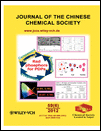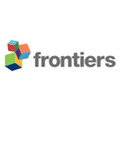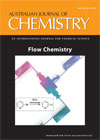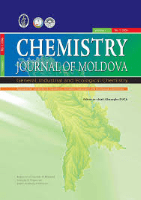
REVUE ROUMAINE DE CHIMIE
Scope & Guideline
Pioneering Research: Where Romanian Chemistry Meets the World
Introduction
Aims and Scopes
- Materials Chemistry:
Research on the synthesis, characterization, and application of new materials, including nanomaterials and composites, is a significant focus. This includes studies on catalytic properties, photonic applications, and structural investigations of various compounds. - Synthetic and Analytical Chemistry:
The journal publishes studies that involve the development of new synthetic methodologies, including green chemistry approaches, as well as advancements in analytical techniques for chemical analysis. - Medicinal and Pharmaceutical Chemistry:
A considerable amount of research is dedicated to the synthesis and evaluation of bioactive compounds, including studies on their pharmacological properties and interactions with biological systems. - Environmental Chemistry:
Papers addressing the environmental impact of chemical substances, including studies on pollution remediation and the development of green chemistry practices, are a core aspect of the journal's mission. - Computational Chemistry:
The journal also includes studies that utilize computational methods to predict chemical behavior, molecular interactions, and the properties of new compounds, contributing to a deeper understanding of chemical systems.
Trending and Emerging
- Nanotechnology and Nanomaterials:
There is a marked increase in the publication of research related to nanomaterials, particularly their synthesis, characterization, and application in various fields, including medicine, catalysis, and environmental remediation. - Green Chemistry:
A significant trend towards sustainable practices is evident, with many papers focusing on eco-friendly synthesis methods, waste reduction, and the development of biodegradable materials, reflecting a broader societal push towards sustainability. - Biochemistry and Pharmacology:
Research at the intersection of chemistry and biology is on the rise, with an increasing number of studies exploring the pharmacological properties of new compounds and their potential therapeutic applications. This trend highlights the importance of interdisciplinary approaches in addressing health-related challenges. - Computational Modeling:
The use of computational methods to model chemical processes and predict the behavior of new materials is gaining traction, as evidenced by a growing number of studies employing advanced computational techniques in their research. - Environmental and Analytical Chemistry:
There is an emerging focus on environmental chemistry, particularly studies that investigate the detection and remediation of pollutants, as well as the development of analytical techniques for environmental monitoring.
Declining or Waning
- Traditional Organic Synthesis:
There has been a noticeable decline in papers focused solely on traditional organic synthesis methods without the integration of modern techniques or applications, reflecting a trend towards more innovative and interdisciplinary approaches. - Inorganic Chemistry:
Research specifically centered on classical inorganic chemistry topics, such as coordination compounds without biological or environmental relevance, appears to be decreasing in favor of studies that emphasize applications in materials science or catalysis. - Basic Physical Chemistry:
The focus on foundational physical chemistry topics, such as fundamental thermodynamic studies or classical kinetics, seems to be waning as the journal increasingly emphasizes applied research and interdisciplinary studies.
Similar Journals

Moroccan Journal of Chemistry
Fostering Scientific Dialogue in Emerging Chemistry Fields.Moroccan Journal of Chemistry, published by the University Mohammed Premier Oujda, serves as a pivotal platform for researchers and professionals in the field of chemistry, particularly focusing on diverse and emerging areas within the discipline. Established in 2018, this open-access journal facilitates widespread dissemination of scholarly articles, ensuring that cutting-edge research reaches a global audience. With an ISSN of 2351-812X and categorized in the Q3 quartile for miscellaneous chemistry in 2023, the journal maintains rigorous peer-review standards while fostering an inclusive environment for scientific dialogue. Located in Morocco, it aims to bridge local and international research communities, contributing to the advancement of knowledge in chemistry. As it continues to grow, the Moroccan Journal of Chemistry remains an essential resource for students, educators, and professionals eager to stay abreast of the latest developments in the field.

Journal of the Iranian Chemical Society
Championing Excellence in Chemical ResearchThe Journal of the Iranian Chemical Society, published by SPRINGER, is a prominent academic journal dedicated to advancing the field of chemistry. With an ISSN of 1735-207X and an E-ISSN of 1735-2428, this quarterly journal has been contributing valuable research from 2006 to 2024. Situated in Germany, it serves as a vital platform for chemists and researchers to disseminate their findings, particularly within the miscellaneous chemistry category, where it ranks in the Q3 quartile for 2023. Despite its current lack of open access options, the journal maintains a solid presence in the academic community, evidenced by its Scopus ranking of #165 out of 408 in general chemistry and a commendable 59th percentile. The journal's objective aims to foster innovation and collaboration in chemical research, making it an essential resource for professionals and students keen on pioneering developments in the field. As a subscriber, you will gain insights into cutting-edge research that drives the future of chemistry.

Vietnam Journal of Chemistry
Advancing Chemistry Through Innovative ResearchVietnam Journal of Chemistry, published by WILEY, is a prominent academic journal that serves as a platform for the dissemination of innovative research in the field of chemistry. With its ISSN 0866-7144 and E-ISSN 2572-8288, this journal has made a significant impact on the global scientific community, evidenced by its 2023 Scopus ranking as #274 in the General Chemistry category and a commendable percentile of 32nd. The journal, categorized in the Q3 quartile for miscellaneous chemistry subjects, aims to foster communication among chemists from Vietnam and around the world, encouraging collaboration and the exchange of cutting-edge knowledge. While it currently does not offer Open Access options, the Vietnam Journal of Chemistry is committed to contributing valuable insights from its coverage years spanning from 2018 to 2024, making it a worthy resource for researchers, professionals, and students dedicated to advancing the field of chemistry. Based in the United Kingdom, it stands as a testament to the vibrant research endeavors emerging from Vietnam and beyond.

Ovidius University Annals of Chemistry
Fostering Global Collaboration in Chemistry.Ovidius University Annals of Chemistry is a prominent open-access journal dedicated to the field of chemistry and chemical engineering, published by OVIDIUS UNIV PRESS since 2012. With its ISSN 1583-2430 and E-ISSN 2286-038X, this journal seeks to foster innovative research and disseminate knowledge across diverse chemical disciplines. Situated in the vibrant academic setting of Ovidius University in Constanta, Romania, this journal receives contributions from a global pool of researchers, enhancing its relevance in the international scientific community. The open-access format ensures that all published articles are freely available, promoting a wider reach and impact of the research dissemination. As a valued resource for academics, industry professionals, and students alike, the Ovidius University Annals of Chemistry plays a crucial role in advancing the understanding of chemical sciences and engineering practices.

JOURNAL OF THE CHINESE CHEMICAL SOCIETY
Navigating the Landscape of Chemical AdvancementsJOURNAL OF THE CHINESE CHEMICAL SOCIETY, published by WILEY-V C H VERLAG GMBH, is a vital resource in the field of chemistry, focusing on a broad array of topics pertinent to general chemistry and its advancing sub-disciplines. Established in 1954 and running through 2024, this journal serves as a significant platform for the dissemination of high-quality research, showcasing innovative findings and developments within the chemical sciences. With its Q3 category ranking and positioning at Rank #203 in General Chemistry per Scopus, it reflects the journal's commitment to research excellence and impact. While not an open-access publication, it ensures accessibility to a global audience, making it an essential tool for researchers, professionals, and students alike seeking to stay informed and engaged in the evolving landscape of chemistry.

Frontiers in Chemistry
Catalyzing Breakthroughs Across Chemistry Disciplines.Frontiers in Chemistry is an esteemed and innovative Open Access journal published by FRONTIERS MEDIA SA, based in Lausanne, Switzerland. Since its inception in 2013, the journal has established itself as a leading platform for the dissemination of high-quality research across a broad spectrum of chemistry disciplines, achieving a notable Q1 classification in the miscellaneous chemistry category as of 2023. With an impressive Scopus rank, placing it at 72nd out of 408 in General Chemistry and falling within the 82nd percentile, Frontiers in Chemistry is committed to publishing significant findings that contribute to the advancement of the field. The journal's Open Access model ensures that research is freely accessible to all, fostering a greater exchange of knowledge and collaboration among researchers, professionals, and students globally. It covers a range of topics, from organic and inorganic chemistry to materials science and biochemistry, making it an essential resource for anyone seeking to stay at the forefront of chemical research.

ACTA CHIMICA SLOVENICA
Connecting Researchers to Shape the Future of ChemistryACTA CHIMICA SLOVENICA is a distinguished peer-reviewed journal dedicated to advancing the field of chemistry, published by the SLOVENSKO KEMIJSKO DRUSTVO. With an ISSN of 1318-0207 and E-ISSN 1580-3155, this journal has been an essential resource for researchers and professionals since its inception in 1996. Recognized for its commitment to open access since 1998, it fosters global collaboration by making research widely available. Based in Slovenia, the journal operates with a focus on various domains within chemistry, achieving a respectable Q3 ranking in 2023 within the miscellaneous chemistry category on Scopus, showcasing its impact and relevance. This journal serves as a vital platform for innovative research, reviews, and discoveries, aiming to enhance knowledge and ignite curiosity in a diverse readership, including students and emerging scholars in the field.

Jordan Journal of Chemistry
Catalyzing Collaboration: Where Local Chemistry Meets Global Science.The Jordan Journal of Chemistry is a prominent publication dedicated to advancing the field of chemistry in Jordan and beyond. Published by the Yarmouk University Deanship of Research & Graduate Studies, this journal serves as a platform for researchers, educators, and practitioners to disseminate their findings in a variety of chemistry sub-disciplines. Although currently classified in Q4 of miscellaneous chemistry and ranking within the 9th percentile according to Scopus, the journal plays a crucial role in fostering academic dialogue and collaboration in the region. With its ISSN 1814-9111 and E-ISSN 2079-7249, the Jordan Journal of Chemistry offers open access to researchers from diverse backgrounds, ensuring that critical research is both accessible and impactful. By bridging local studies with global scientific advancements, this journal is poised to contribute significantly to the growth and recognition of chemistry as a key scientific discipline in the region, with convergence efforts set from 2020 to 2024.

AUSTRALIAN JOURNAL OF CHEMISTRY
Elevating the standards of chemistry research worldwide.The Australian Journal of Chemistry, with an ISSN of 0004-9425 and an E-ISSN of 1445-0038, is a distinguished publication from CSIRO PUBLISHING, dedicated to advancing the field of chemistry since its inception in 1948. Based in Australia, this journal serves as a platform for original research articles, reviews, and innovative studies that encompass a wide spectrum of chemical disciplines, aiming to foster communication and collaboration among researchers globally. Despite its Q3 ranking in the Chemistry (Miscellaneous) category and standing at rank #236 in Scopus’ general chemistry classification, it remains an essential resource for professionals and students seeking to stay informed about emerging trends and discoveries in chemistry. The journal does not offer open access, emphasizing the premium quality of peer-reviewed content that adheres to rigorous academic standards. By bridging theory and practice, the Australian Journal of Chemistry continues to play a crucial role in shaping the future of chemical sciences.

Chemistry Journal of Moldova
Innovative Insights: Shaping the Future of Environmental ChemistryChemistry Journal of Moldova is a pioneering open-access journal dedicated to fostering the dissemination of significant research in the diverse fields of chemistry, including Environmental Chemistry, Process Chemistry and Technology, and more. Published by the esteemed Academia Sciences Moldova, Institute of Chemistry, this journal has been at the forefront of scientific inquiry since its establishment in 2006. With an ISSN of 1857-1727 and a digital presence through its E-ISSN of 2345-1688, it provides an accessible platform for researchers, students, and professionals to share and engage with cutting-edge findings. Although currently ranked in the Q4 quartile in several chemistry categories, the journal is committed to improving its impact within the academic community and aims to highlight emerging trends and technologies in the chemistry domain. The journal's office is located at 3 Academiei Str, Chisinau MD-2028, Moldova. As it converges its publication years from 2016 to 2024, the Chemistry Journal of Moldova invites all contributors and readers to explore its rich repository of research that bridges innovative ideas to practical applications.